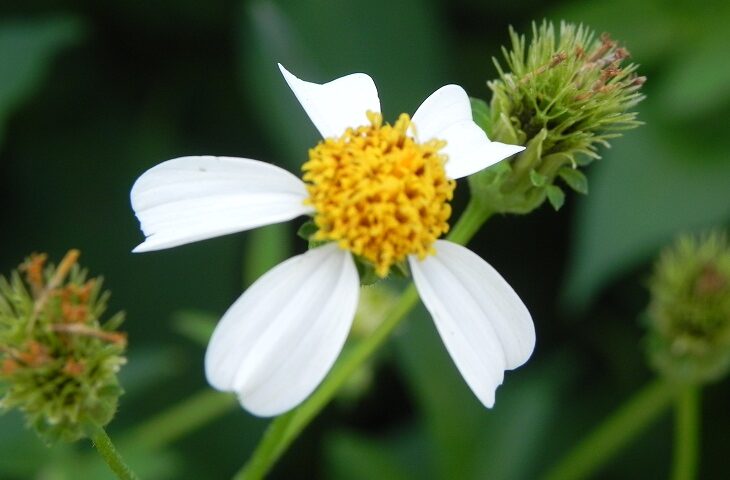Bidens Alba is a perennial herb, commonly known as the Spanish Needles. It is part of the sunflower family and is native to North America and the Caribbean. Use this incredible plant for medicinal purposes and as a food source. In this article, we will discuss where to find Bidens Alba, how to identify and prepare it, as well as its historical uses and possible look-alikes.
Where to Find It:
You can find Bidens Alba in open fields, roadsides, and along the edges of woods and streams. Foragers find this amazing plant thriving in well-drained soils and is widely distributed in tropical and subtropical regions around the world . In its natural habitat, the plant grows in sunny, moist areas.
Identification:
Bidens Alba has yellow, daisy-like flowers with a central disk and numerous, sharp-tipped, needle-like bracts. The leaves are lance-shaped, toothed, and have a rough texture. The plant grows to about 3-4 feet in height and blooms from late summer to early fall.
Preparation and Storage:
Utilize the edible and nutritious leaves and flowers as a seasoning in soups and stews, or as a tea. To prepare the tea, steep the dried leaves and flowers in hot water for 10-15 minutes. Dry the leaves and flowers and store in an airtight container for future use.
Historical Uses:
Bidens Alba has a long history of medicinal use. Many people historically and today use use leaves and flowers to treat wounds, skin diseases, and digestive problems and still are today. In traditional medicine, the plant is used as a laxative, diuretic, and to treat fever and malaria.
Some people confuse Spanish Needle with other members of the sunflower family, such as the Oxeye Daisy and the Black-Eyed Susan. It is important to be able to distinguish Bidens Alba from these look-alikes, as some of them can be toxic.
Bidens Alba is a versatile plant that many people use for medicinal and culinary purposes. Whether used as a tea or as a seasoning, this plant is a valuable resource for botanists and herbalists alike. When foraging for and harvesting it, be sure to correctly identify the plant and avoid toxic look-alikes.



